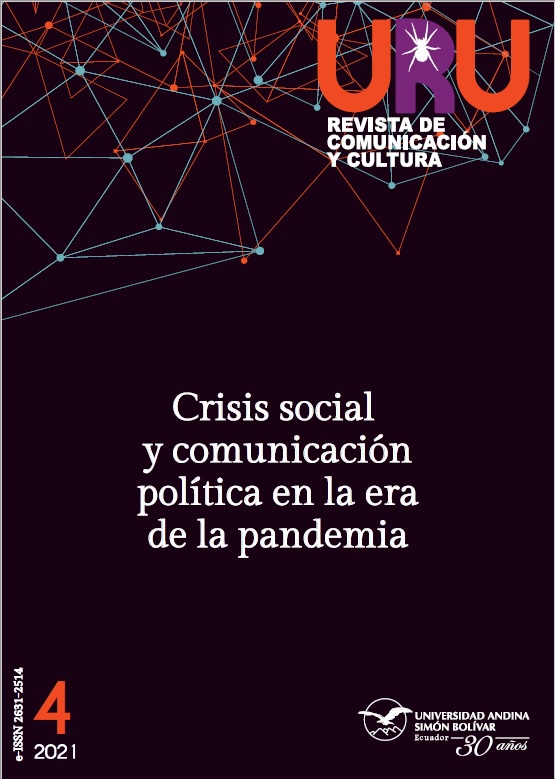Steps to Be Able to Carry Out a Digital Marketing Strategy in a Company
DOI:
https://doi.org/10.32719/26312514.2021.4.12Keywords:
Digital marketing, in-company e-commerce, social media strategy, e-commerce benefitsAbstract
This article proposes to establish the steps that are required to be able to carry out a basic digital marketing strategy in a company, in order to be able to position itself in social networks, being able to gain visibility in them, to achieve that companies can generate contact with the client through different means and communication channels. The purpose of this study is to know what strategies and steps companies must follow to enter digital marketing, since the client is increasingly informed and demanding, so they search social networks for different products and services and compare the options. So that. companies must enter this world and know how they can position themselves in it. To this end, we propose to study specialized bibliography on the subject and carry out a systematic observation of digital marketing strategies of various companies, in order to establish the steps that are required to be efficient in the message.
Downloads
References
Andrade, D. 2016. “Estrategias de marketing digital en la promoción de marca ciudad”. Revista Escuela de Administración de Negocios 80: 59-72.
Awad, E. 2007. Manual fundamental de comercio electrónico. Madrid: Anaya Multimedia.
Barrera, A. 2021. “7 beneficios de las ventas online vs. venta tradicional”. Next_U. Accedido 22 de mayo. https://bit.ly/3vpG78U.
Bradley, A., y M. McDonald. 2012. La organización social. Convertir en resultados las oportunidades de las redes sociales. Madrid: Profit.
Castillo, R. 2017. “24 ventajas de tener un sitio web para cualquier negocio”. Mundo Virtual. https://bit.ly/34bcRH4.
Connect Américas. 2021. “Los beneficios del e-commerce”. Connect Américas. Accedido 22 de mayo. https://bit.ly/3hIVS76.
Forbes México. 2014. “7 beneficios del e-commerce en las empresas”. Forbes México. https://bit.ly/2Sk2LRL.
Galeano, S. 2018. “V Estudio Anual de eCommerce en España 2018: El país de los (casi) 20 millones de compradores online”. Marketing 4 Ecommerce. 11 de octubre. https://bit.ly/2RwvRxj.
García, I. 2011. “Marketing digital multimedia: Nuevos formatos y tendencias”. Revista Géminis 2 (2): 37-45.
González, A. 2016. “Importancia, evolución y repercusión de las RRSS en la campaña electoral”. Tesis de grado, Universidad Internacional de La Rioja. https://bit.ly/3vcielr.
González, O., y J. Arciniegas. 2016. Sistemas de gestión de calidad. Ciudad de México: ECOE Ediciones.
Guaña, E., A. Alvear, y K. Ortiz. 2015. “Caracterización del consumidor digital ecuatoriano.” Revista Publicando 2 (5): 226-42. https://bit.ly/3oEQseG.
Kale, A., y M. Rajivkumar. 2018. “M-Commerce: Services and Applications”. International Journal of Advanced Science and Research 3 (1), 19-21. https://bit.ly/3oEGr12.
Kotler, P., y G. Armstrong. 2012. Marketing. Ciudad de México: Pearson.
—, D. Camara, I. Grande, e I. Cruz. 2000. Dirección de Marketing. Madrid: Pearson Educación.
—, I. Setiawan, y H. Kartajaya. 2016. Marketing 4.0. Los Ángeles, CA: Pearson.
Lorenzo, C., M. Gómez, y M. del Carmen. 2011. “Redes sociales virtuales, ¿de qué depende su uso en España?”. Innovar. Revista de Ciencias Administrativas y Sociales 21 (41): 145-57.
Martínez, J. 2008. “La calidad en el servicio para la satisfacción del cliente”. Revista Unisangil Empresarial 2: 25-30.
Mejía, J. 2018. “Beneficios de las tiendas online y el comercio electrónico”. Juan Carlos Mejía Llano. 3 de agosto. https://bit.ly/3fB33M4.
Moschini, S. 2012. Claves del marketing digital. Barcelona: La Vanguardia.
Naranjo, F. 2018. “El e-commerce en España: Análisis de la situación actual y de futuro”. Comunica Web. https://bit.ly/3fHFxNc.
Nielsen. 2017. “Estudio global: Comercio conectado”. Nielsen. 6 de febrero. https://bit.ly/2RCTeoE.
Observatorio eCommerce. 2018. “¿Cómo es el cliente de eCommerce en España?”. Observatorio eCommerce. https://bit.ly/3vgWxke.
ONTSI. 2018. “Estudio sobre Comercio Electrónico B2C 2017”. Observatorio Nacional de las Telecomunicaciones y de la SI. https://bit.ly/3udfpis.
Sainz, J. 2021. El plan de marketing digital en la práctica. Madrid: ESIC.
Salazar, A., L. Paucar, y Y. Borja. 2017. “El marketing digital y su influencia en la administración empresarial”. Dominio de las Ciencias 3 (4): 1161-71.
Selman, H. 2017. Marketing digital. s/c: Ibukku.
Statista. 2019. “Evolución anual del gasto en publicidad en España de 2008 a 2018, por medio (en millones de euros)”. Statista. https://bit.ly/3ucx6Pk.
Suárez, M. 2020. “Estrategias digitales utilizadas por 7 empresas durante el COVID-19: Estudio de caso”. Revista Economía y Administración 11 (1): 41-51.
Uribe, C., y D. Sabogal. 2021. “Marketing digital en micro y pequeñas empresas de publicidad de Bogotá”. Universidad & Empresa 23 (40): 1-22
Downloads
Published
How to Cite
Issue
Section
License
ASSIGNMENT OF RIGHTS, DECLARATION OF CONFLICT OF INTEREST AND DISSEMINATION
The authors who publish in this journal accept the following conditions:
- Authors retain copyright and grant the journal the right of first publication, with the work registered under the Creative Commons Attribution-NonCommercial-ShareAlike 4.0 License, which allows sharing, adapting and attributing the work (see: Open Access Policies).
- Authors can make other independent and additional contractual agreements for the distribution of the article published in this journal (e.g., include it in an institutional repository or publish it in a book) as long as they expressly indicate that the article was published for the first time in Uru: Revista de Comunicación y Cultura. In the case of reproduction, a note similar to the following must be included: This text was originally published in the journal Uru: Revista de Comunicación y Cultura N ° -, year of publication.
- Authors are encouraged to publish their work on the Internet (e.g. on institutional or personal pages) in the final version published by Uru: Revista de Comunicaicón y Cultura as it may lead to a wider and faster dissemination of the published work.








